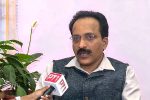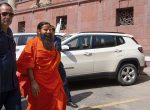
AI tool that detects rare diseases from portraits, health data
Team Udayavani, Jun 10, 2019, 4:22 PM IST

Berlin: Scientists have developed an artificial intelligence system that uses portrait photos in combination with genetic and patient data to efficiently and reliably diagnose rare diseases.
Every year, around half a million children worldwide are born with a rare hereditary disease. Obtaining a definitive diagnosis can be difficult and time-consuming.
The neural network, described in the journal Genetics in Medicine, automatically combines portrait photos with genetic and patient data.
Many patients with rare diseases go through lengthy trials and tribulations until they are correctly diagnosed.
“This results in a loss of valuable time that is actually needed for early therapy in order to avert progressive damage,” said Peter Krawitz from the University Hospital Bonn (UKB).
Researchers showed how artificial intelligence can be used to make comparatively quick and reliable diagnoses in facial analysis.
They used data of 679 patients with 105 different diseases caused by the change in a single gene. These include, for example, mucopolysaccharidosis (MPS), which leads to bone deformation, learning difficulties and stunted growth. Mabry syndrome also results in intellectual disability.
All these diseases have in common that the facial features of those affected show abnormalities.
This is particularly characteristic, for example, of Kabuki syndrome, which is reminiscent of the make-up of a traditional Japanese form of theatre. The eyebrows are arched, the eye-distance is wide and the spaces between the eyelids are long.
The used software can automatically detect these characteristic features from a photo. Together with the clinical symptoms of the patients and genetic data, it is possible to calculate with high accuracy which disease is most likely to be involved.
The scientists trained this computer program with around 30,000 portrait pictures of people affected by rare syndromal diseases.
“In combination with facial analysis, it is possible to filter out the decisive genetic factors and prioritize genes,” said Krawitz.
Udayavani is now on Telegram. Click here to join our channel and stay updated with the latest news.
Top News
Related Articles More

Indian students bag NASA awards for Human Exploration Rover Challenge

‘Mastering the Data Paradox’: Book uncovers pivotal role of data in AI age

Bitcoin’s latest ‘halving’ has arrived. Here’s what you need to know

Can AI Read Our Minds? And Should We Be Worried About It?

India aims to achieve debris-free space missions by 2030: ISRO chief Somanath
MUST WATCH
Latest Additions

Karnataka CM Siddaramaiah stages dharna over delay in release of drought relief funds by Centre

Firing outside Salman Khan’s home: Police recovers two pistols, bullets from Tapi river

Sexual harassment case: HC declines to suspend prison sentence of former TN special DGP

Noida once ‘centre of corruption’, now known for its biz growth: Rajnath

“Very sorry. We will be on your side,” CM Siddaramaiah to slain student’s father






















